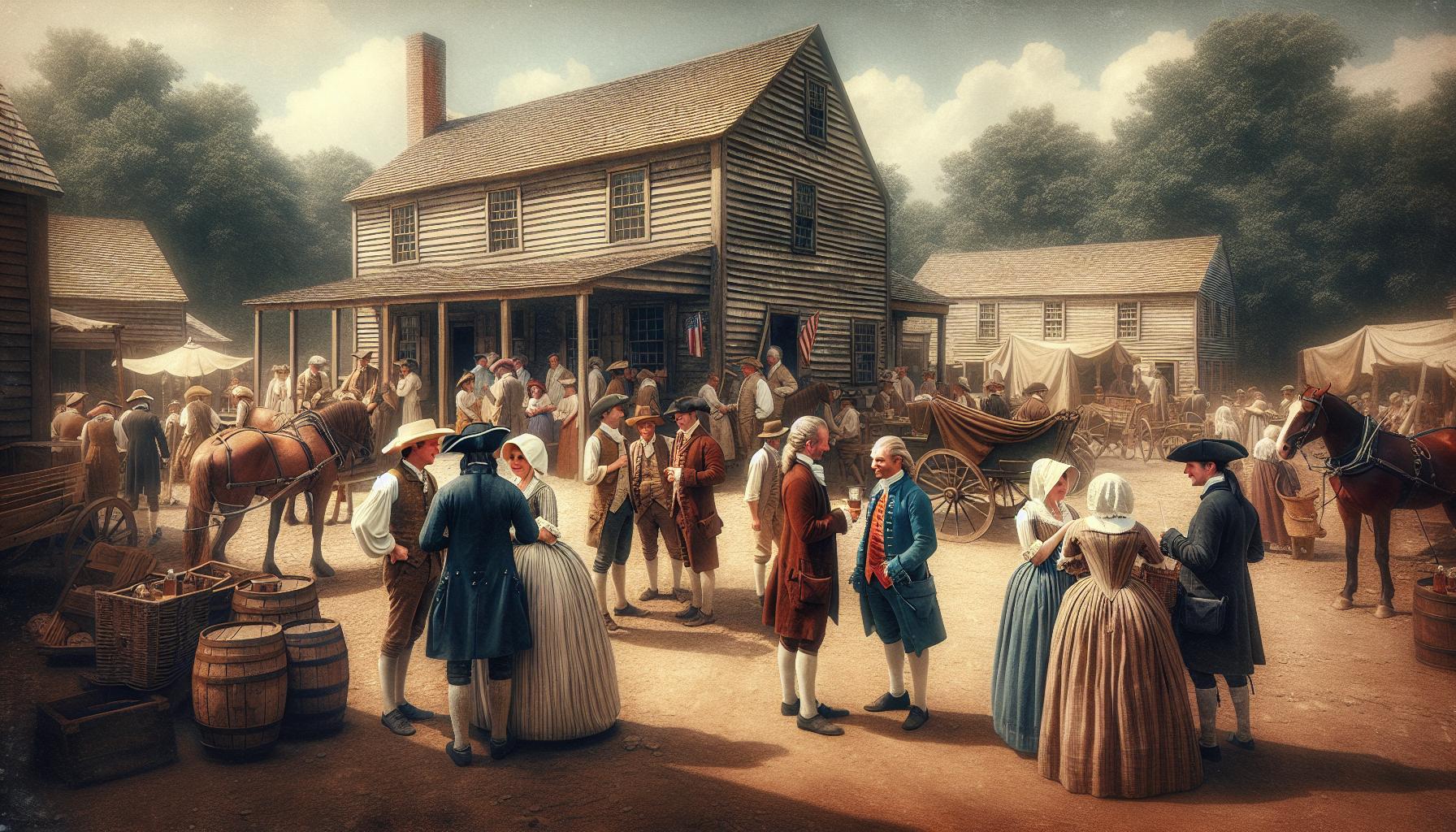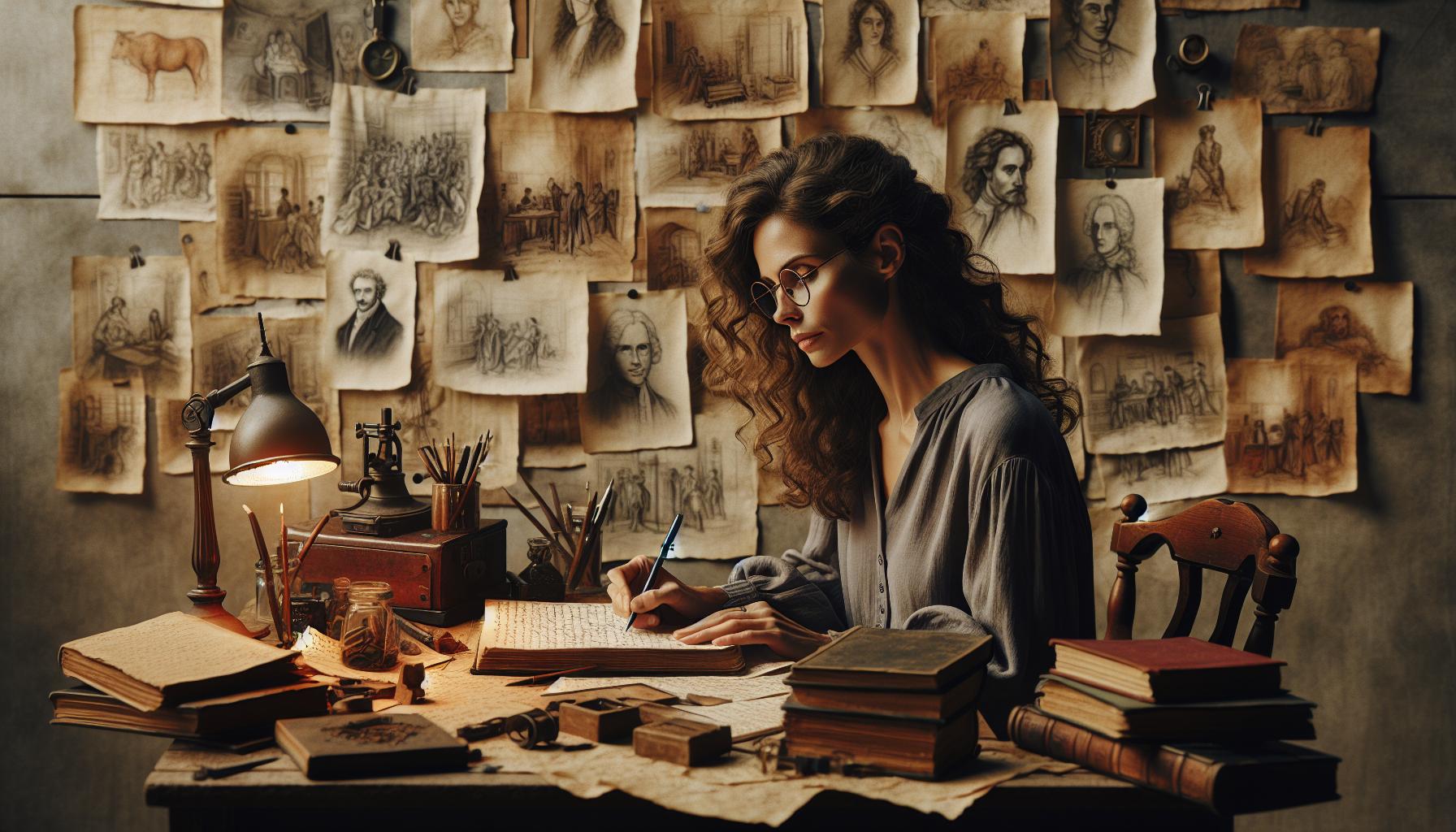Time-traveling through words has never been more exciting! Historical fiction offers writers a unique opportunity to blend real-world events with creative storytelling. Whether it’s exploring the glittering halls of Versailles or surviving the gritty streets of Victorian London writers can craft compelling narratives that bring the past to life.
For aspiring authors looking to dive into historical fiction writing prompts serve as the perfect springboard. These carefully crafted scenarios help writers overcome the dreaded blank page while ensuring historical accuracy remains intact. From ancient civilizations to recent decades there’s an endless well of inspiration waiting to be tapped. Writers can explore pivotal moments in history through the eyes of fictional characters creating stories that educate and entertain.
What Makes Historical Fiction Writing Prompts Effective
Effective historical fiction writing prompts combine factual historical elements with creative storytelling opportunities. These prompts serve as launching points for narratives that transport readers to specific time periods while maintaining engagement through compelling character-driven stories.
Balancing Historical Accuracy With Creative Freedom
Historical fiction writing prompts integrate documented events with fictional elements to create authentic storytelling opportunities. Historical accuracy establishes credibility through verifiable facts, dates, locations or real historical figures. Creative elements enhance the narrative by introducing fictional characters who interact with historical events, offering fresh perspectives on well-documented moments. Authors incorporate imaginative plot points around established historical frameworks to develop engaging storylines while respecting the era’s social norms, technologies, customs. Research-based prompts focusing on specific time periods provide structure for writers to explore “what if” scenarios within historically accurate contexts.
Creating Authentic Period Details
Period-specific details transform historical fiction prompts into immersive narrative experiences. Writers incorporate authentic elements like clothing styles, transportation methods, social customs, architecture, language patterns of the chosen era. Historical records, primary sources, photographs, diaries provide accurate reference points for daily life details. Authors recreate historical settings through sensory descriptions – the clatter of horse-drawn carriages, the texture of period fabrics, the aromas of traditional cooking methods. Dialogue reflects era-appropriate vocabulary, expressions, formality levels based on social class distinctions. Physical environments incorporate authentic materials, architectural styles, lighting sources found during specific time periods.
Time Periods That Inspire Great Stories

Historical periods offer rich settings for compelling narratives, each presenting unique social dynamics, conflicts, and cultural elements that serve as foundations for storytelling.
Ancient Civilizations and Medieval Times
Ancient Egypt’s dynasties provide settings for tales of political intrigue among pharaohs, priests, and architects. The Roman Empire presents opportunities for stories about gladiators, senators, and merchants navigating complex social hierarchies. Medieval Europe offers backdrops featuring castle sieges, plague outbreaks, and monastery life during the 5th to 15th centuries.
Key historical events inspire specific story elements:
- The construction of the Great Pyramid of Giza (2560 BCE) highlights ancient engineering feats
- The fall of Constantinople (1453 CE) showcases cultural clashes and empire transitions
- The Viking Age (793-1066 CE) presents tales of exploration and conquest
- The Crusades (1095-1291) offer plots involving religious conflict and cultural exchange
Revolutionary and War-Time Narratives
Revolutionary periods present compelling human stories against backdrops of social change. The American Revolution (1765-1783) offers perspectives from colonial shopkeepers, British soldiers, and Native American tribes. The French Revolution (1789-1799) provides settings featuring aristocrats, peasants, and political reformers.
- World War I (1914-1918) explores technological advancement and trench warfare
- The Civil War (1861-1865) examines divided families and social transformation
- The Cold War (1947-1991) reveals espionage and political tension
- The Industrial Revolution (1760-1840) showcases class struggles and innovation
Character-Driven Historical Prompts
Character-driven historical fiction prompts focus on the personal narratives that shape historical events. These prompts examine both influential figures and ordinary individuals whose lives intersected with pivotal moments in history.
Notable Historical Figures
Historical figures offer compelling starting points for fictional narratives. Writers explore untold perspectives of Catherine the Great’s rise to power through the eyes of her personal maid or Leonardo da Vinci’s apprentice discovering the secrets behind his inventions. Queen Cleopatra’s trusted advisor witnesses political intrigue in ancient Egypt while Beethoven’s piano tuner observes the composer’s descent into deafness. Marie Antoinette’s royal gardener documents the growing tensions before the French Revolution or Columbus’s navigator questions the true motives of their expedition. These prompts reveal intimate details of historical personalities through the perspectives of those closest to them.
Everyday People in Extraordinary Times
Ordinary individuals experiencing extraordinary historical moments create compelling narratives. A baker in ancient Pompeii notices unusual volcanic activity while preparing the day’s bread. A seamstress in Victorian London creates dresses for wealthy clients during the Industrial Revolution. A street vendor in Constantinople witnesses the final days before the Ottoman conquest. A railway worker on the transcontinental railroad documents the transformation of the American West. A telegraph operator receives the first news of the Titanic’s distress signals. These prompts place common people at the intersection of major historical events, offering unique viewpoints on significant moments in time.
Setting-Based Writing Prompts
Historical settings provide rich backdrops for compelling narratives that transport readers through time. These prompts focus on specific locations during pivotal moments in history.
Famous Historical Events
The Great Fire of London in 1666 offers a backdrop for stories about survival amid chaos on Pudding Lane. A merchant’s daughter witnesses the devastation from the Thames River while protecting her family’s livelihood. The construction of the Panama Canal creates opportunities for tales about engineering feats alongside cultural clashes between workers. During the California Gold Rush of 1849, a prospector discovers more than gold in the Sierra Nevada mountains. The opening of King Tutankhamun’s tomb in 1922 presents narratives exploring archaeology, mystery, and ancient Egyptian customs through an assistant’s perspective.
Lesser-Known Historical Moments
The Tunguska Event of 1908 in Siberia creates opportunities for stories about local villagers experiencing the mysterious explosion. A monk transcribes illuminated manuscripts during the Viking raid of Lindisfarne in 793 CE. The Venice Glass Maker Exodus of 1291 sparks tales of artisans protecting trade secrets while establishing new lives in Murano. A physician documents the London Beer Flood of 1814 while treating victims at the Meux & Company Brewery. A lighthouse keeper maintains their post during the Christmas Storm of 1839 off the coast of Massachusetts.
Research Tips for Historical Fiction Writers
Historical accuracy forms the foundation of compelling historical fiction. Thorough research enhances storytelling authenticity while enriching narrative details.
Primary Source Materials
Primary sources unlock authentic historical perspectives through firsthand accounts. Letters between Civil War soldiers reveal intimate battlefield emotions while court transcripts expose legal proceedings from medieval Europe. Government records document population shifts immigration patterns trade routes. Personal diaries offer glimpses into daily Victorian life including fashion trends social customs dining habits. Archaeological findings provide tangible evidence of ancient civilizations through pottery fragments architectural remains burial goods. Museums house collections of period-specific artifacts such as clothing weapons furniture art pieces. Original newspapers capture public sentiment political climate social issues advertisements from specific time periods. These materials create an immersive foundation for historical storytelling backed by documented evidence.
Historical Documentation Methods
Effective documentation streamlines historical research through organized systems. Digital databases catalog information by date location topic allowing quick access to relevant materials. Archive management tools track source citations references quotations ensuring accuracy in historical details. Research journals document findings observations questions maintaining clear research progression. Timeline mapping connects events people places across historical periods. Cross-referencing validates historical facts through multiple independent sources. Photography collections preserve visual records of historical locations landmarks clothing styles. Audio recordings capture oral histories testimonies speeches providing authentic voice patterns dialects. These methods establish reliable research frameworks supporting accurate historical narrative development.
Conclusion
Historical fiction writing prompts offer boundless opportunities for writers to craft compelling stories that bridge past and present. These creative springboards help authors weave engaging narratives while staying true to historical authenticity.
Whether drawing inspiration from ancient civilizations or recent history writers can transport readers to different eras through well-researched details and vivid storytelling. By combining historical facts with imaginative elements they’ll create stories that both educate and entertain their audience.
The key to success lies in thorough research paired with creative storytelling. When writers embrace these prompts they open doors to fascinating narratives that bring history to life through the eyes of both legendary figures and everyday people who witnessed extraordinary times.
